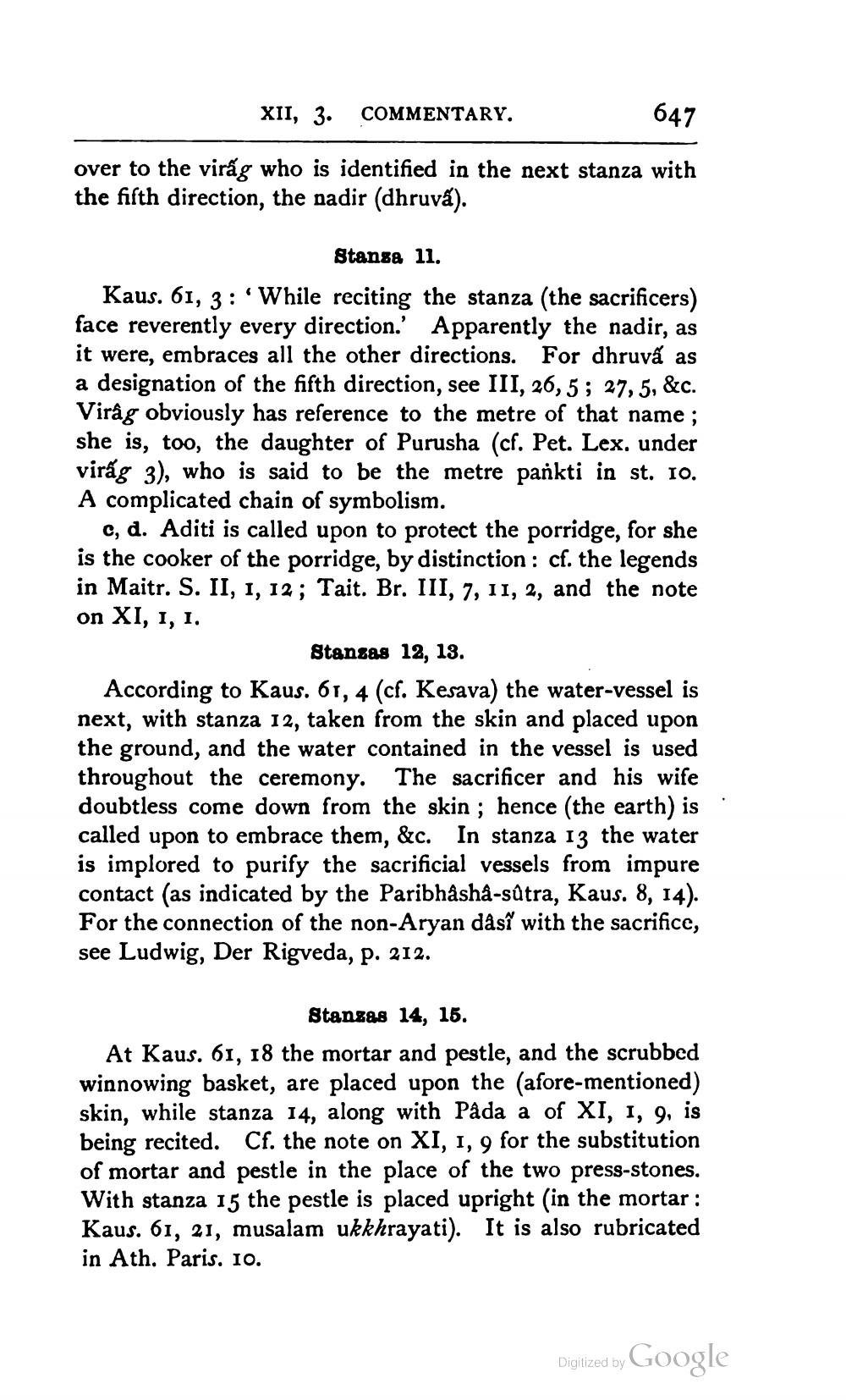________________
XII, 3.
647
over to the virag who is identified in the next stanza with the fifth direction, the nadir (dhruva).
COMMENTARY.
Stanza 11.
Kaus. 61, 3: While reciting the stanza (the sacrificers) face reverently every direction.' Apparently the nadir, as it were, embraces all the other directions. For dhruva as a designation of the fifth direction, see III, 26, 5; 27, 5, &c. Virâg obviously has reference to the metre of that name; she is, too, the daughter of Purusha (cf. Pet. Lex. under virág 3), who is said to be the metre pankti in st. 10. A complicated chain of symbolism.
c, d. Aditi is called upon to protect the porridge, for she is the cooker of the porridge, by distinction: cf. the legends in Maitr. S. II, 1, 12; Tait. Br. III, 7, 11, 2, and the note on XI, I, I.
Stanzas 12, 13.
According to Kaus. 61, 4 (cf. Kesava) the water-vessel is next, with stanza 12, taken from the skin and placed upon the ground, and the water contained in the vessel is used throughout the ceremony. The sacrificer and his wife doubtless come down from the skin; hence (the earth) is called upon to embrace them, &c. In stanza 13 the water is implored to purify the sacrificial vessels from impure contact (as indicated by the Paribhâshâ-sûtra, Kaus. 8, 14). For the connection of the non-Aryan dâsî with the sacrifice, see Ludwig, Der Rigveda, p. 212.
Stanzas 14, 15.
At Kaus. 61, 18 the mortar and pestle, and the scrubbed winnowing basket, are placed upon the (afore-mentioned) skin, while stanza 14, along with Pâda a of XI, 1, 9, is being recited. Cf. the note on XI, 1, 9 for the substitution of mortar and pestle in the place of the two press-stones. With stanza 15 the pestle is placed upright (in the mortar : Kaus. 61, 21, musalam ukkhrayati). It is also rubricated in Ath. Paris. 10.
Digitized by Google




